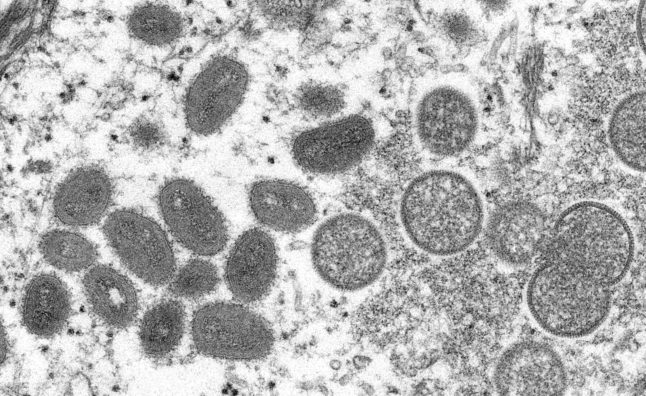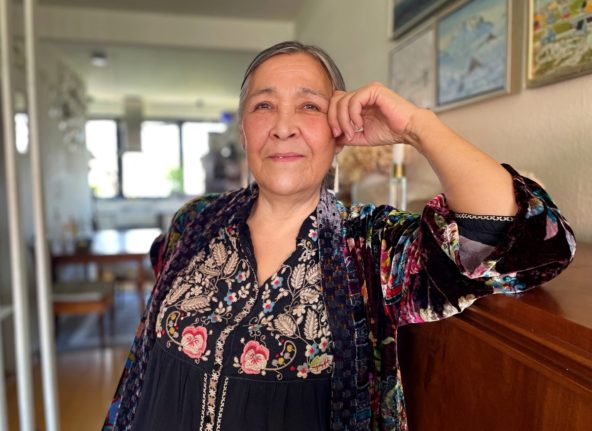What is monkeypox?
Monkeypox, abekopper in Danish, is a zoonotic virus (a virus spread from animals to humans) which most often occurs in areas of tropical rainforest in Central and West Africa. It is occasionally found in other regions, and cases have recently been discovered in Europe, North America and Australia.
“We’ve known about this virus in apes since the 1950s,” Fredrik Elgh, consultant and professor of virology at the University Hospital of Umeå in Sweden, told Swedish news wire TT.
“Every type of animal has its own type of pox, us humans had closely-related smallpox which was wiped out in the 1980s. Smallpox were an enormous issue throughout the history of humanity, we can see that on old mummies.”
“In more recent times, like the 1700s, we know that in every family, multiple children died of smallpox.”
There is no vaccine for monkeypox approved in Europe, but vaccines for smallpox are effective against the virus, as the two viruses are members of the same family.
“The vaccine used against smallpox also has an effect on monkeypox,” Elgh told TT. “That means that those born in the mid-70s or earlier will have a degree of immunologic memory. Young people have no immunity. There’s also a new, sophisticated vaccine which gives good coverage after two doses.”
“What’s good about poxes is that even if you take the vaccine after you’ve been infected, it has an effect on the progress of the illness. There are also antiviral medicines,” Elgh explained to TT.
What causes it?
Monkeypox is spread via close contact with an animal or human with the monkeypox virus. It can be transmitted via bodily fluids, lesions, respiratory droplets or through contaminated materials, such as bedding.
Recent cases of the virus in Europe are thought to have been spread through sexual activity, Bolette Søborg, head of section with the Danish Health Authority, said via a statement on Monday.
“There are indications that the infection is particularly found among men who have sex with men,” Søborg said.
“We were therefore last week in contact with the (organisations) AIDS-fondet and LGBT+ Danmark and asked them to help us create awareness in those groups that there is currently a need to be aware of guidelines relating to hygiene and use of protection during sex,” she said.
Denmark is not the only European country to have detected cases of monkeypox. Cases have also been reported in the United Kingdom, Spain, Netherlands, Germany and Sweden.
READ ALSO: Denmark registers first case of monkeypox
What are the symptoms?
The Danish health ministry describes the symptoms of monkeypox as including fever, shivering and a rash with blisters that can leave wounds when they heal.
Monkeypox typically has an incubation period of six to 16 days, but it can be as long as 21 days. Once lesions have scabbed over and fallen off, the person with the virus is no longer infectious.
Why is it in the news now?
Although cases of monkeypox have been reported outside of affected areas of Central and West Africa previously, the virus is making headlines in parts of Europe now because this is the first time cases have been identified in persons with no recent history of travel to affected areas and no history of contact with previous imported cases.
Danish infectious disease control agency State Serum Institute (SSI) states that 83 cases have been reported across Europe including 23 in Spain. The man who tested positive in Denmark recently visited Gran Canaria, according to SSI.
Is it dangerous?
The type of monkeypox seen in affected areas of Central and West Africa can be serious and, occasionally, deadly. However, it appears that the cases detected so far in Europe have been relatively mild.
“In those countries where it is more prevalent, which is in Central and West Africa, a fatality rate between one and ten percent has been reported,” Elgh told TT. “But then, you have to remember that that’s in an African context where people are not as well-nourished and there isn’t the same access to healthcare, so it can’t be directly translated.”
“There’s not that much data, especially not on how it behaves in our part of the world. There are also different genetic variants of the virus with different levels of severity, so it’s not possible to comment on [how dangerous it is] before we know more,” he further told TT.
Could this cause a new pandemic?
It’s unlikely, Elgh believes. He told TT that “this is not a new pandemic”.
“The general public do not need to be worried about monkeypox,” he added. “But my belief and hope is that this will not be a pandemic like corona. The most likely scenario is that as long as we contact trace properly, it will ebb out,” he told TT.
He explained that the two viruses are different types of viruses, meaning that monkeypox cannot adapt as easily as the Covid-19 virus.
“Monkeypox is a DNA virus, while coronavirus is a RNA virus,” he explained to TT. “DNA viruses are much more stable, which means that you don’t need to be worried that they will adapt as quickly. It would take a lot and a long time before they adapt to humans.”
The Danish Patient Safety Authority said on Monday that contact tracing for monkeypox was being undertaken.
“The Danish Patient Safety Authority is now contact tracing so that close contacts to the patient can be given guidance as to how they should respond,” Health Minister Magnus Heunicke said in a statement.
“Health authorities do not expect broad community infections in Denmark, but we are following the situation closely so we can be as well prepared as possible for any development in the situation,” he said.



 Please whitelist us to continue reading.
Please whitelist us to continue reading.
Member comments